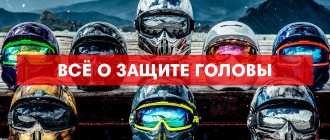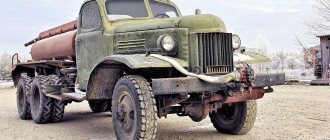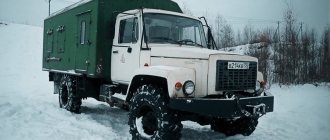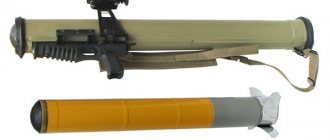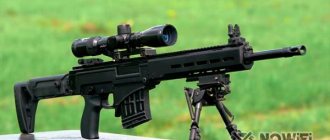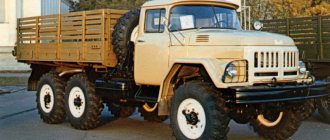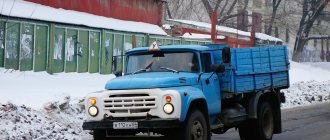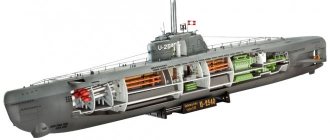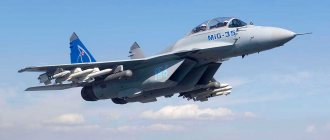The armor is strong. Technical features of T-34 armor protection
Reservation scheme for the T-34 tank of the first production version. Wikimedia Commons Graphics
In the first days of the Great Patriotic War, Soviet T-34 medium tanks became an unpleasant surprise for the enemy. The main tank and anti-tank guns of the German army could not effectively hit such equipment from real ranges, and this state of affairs persisted for quite a long time. It was possible to ensure such a high level of protection for the T-34 tank due to the competent and successful combination of known and new ideas, materials and technologies.
At an angle to the vertical
In a number of projects of the thirties, Soviet tank builders developed the idea of the so-called.
rational booking angles. Installing hull parts at angles and using curved turret elements made it possible to increase the level of protection with a limited increase in the thickness and weight of the armor. All variants of the promising tank, developed by the Kharkov KB-24 before the future T-34, received exactly this type of armor. Project T-34 arr. 1940, according to which mass production was being established, provided for the use of fairly thick armor installed at significant angles. The front of the hull was made of two rolled sheets 45 mm thick; the upper one was installed at an angle of 60° to the vertical, the lower one – 53°. The upper part of the sides was a part 40 mm thick, inclined by 40°. The lower part of the side was vertical and had a thickness of 45 mm. The roof of the building had a thickness of 16 mm; bottom – 13 and 16 mm in different areas.
Assembly of housings at a plant in Nizhny Tagil, 1942. Photo Waralbum.ru
It is easy to calculate that the horizontal thickness of the upper frontal part reached 90 mm, the lower – 75 mm. A similar parameter for the inclined part of the side exceeded 52 mm.
The first version of the turret for the T-34 was welded and consisted of several rolled parts. It received a complex-shaped frontal unit with a thickness of 45 mm. The side and stern, installed with an inclination of up to 30°, had the same thickness. A 40-mm gun mantlet was provided. Subsequently, a cast tower was created. Due to the differences between rolled and cast armor, the wall thickness increased to 52 mm. On top, all cap options were covered with a 15 mm roof.
Thus, at the time of its appearance, the T-34 had fairly thick armor and in this regard was second only to heavy tanks of domestic design. At the same time, it was possible to obtain a minimum mass of the structure. Thus, the hull of the experimental A-34 weighed approx. 10.4 tons, of which 7.92 tons were armor. The tower protection had a mass of less than 1.7 tons with a total tower weight of over 3.15 tons.
Production line in Nizhny Tagil, 1943. Photo Waralbum.ru
New alloy
In 1939, the Mariupol plant named after.
Ilyich, who was to produce armor parts. At that time, the company produced bulletproof armor, while there were no projectile-proof alloys in the range. A group of specialists from the Leningrad Armor Research Institute No. 48 arrived at the plant to jointly develop a new material. Two sets of armor for the construction of experimental tanks were ready in November 1939, but work on a new type for production vehicles continued. In January of the following year, preliminary work on the armor, designated MZ-2 (“Mariupol Plant, Second”), was completed. Then six experimental melts were carried out, during which 49 armored parts of different compositions were prepared for subsequent tests. These products had a thickness from 25 to 50 mm in increments of 5 mm.
In Mariupol, tests were carried out with shelling from 37- and 45-mm guns. Armor of all thicknesses showed acceptable characteristics of resistance to various projectiles. Then part of the armor plates was sent to the Izhora plant for testing by shelling with a 76-mm cannon. All six samples shattered when hit by a projectile, and fragments also broke off from the rear side.
Museum T-34, built in 1941. The turret of the vehicle is welded from rolled parts. Photo: Wikimedia Commons
Based on the test results, the developers received a recommendation to increase the viscosity of the armor. In addition, the customer revised the requirements, and an improved version of the MZ-2 was recommended for launch into production. Melting of bulk armor began already in April 1940, and by the end of the month the first batch of 10 sets of armor parts for the T-34 was sent to Kharkov. At that time, the armor bore the new name I-8S. Later, the “experimental” letter “I” was removed.
Initially, 8C armor was produced only in Mariupol. Subsequently, in parallel with the development of T-34 production at new sites, melting began at other enterprises, in Magnitogorsk, Kuznetsk and other cities. In 1941, after the loss of Mariupol and Kharkov, this made it possible to maintain tank production and further increase it.
Development of protection
As production continued, the design of the T-34 tank and individual units was changed several times. Some of these innovations were aimed at improving tactical and technical characteristics, while others were introduced to simplify, speed up and reduce the cost of mass production. In addition, the specifics of serial production at different enterprises affected. In particular, this led to minor deviations in the thickness of the armor of different batches.
Tank with a cast turret, 1942. Photo: Wikimedia Commons
The strength of the hull protection as a whole has not changed or been revised. Only in 1943 were measures taken to strengthen the front part of the bottom (from 16 to 20 mm) and a new upper aft part appeared - 45 mm instead of 40 mm. The remaining parts of the body did not undergo significant modifications. At the same time, tanks from different factories could differ in the way parts were connected. For example, most of the cases were butt welded, but products with tenon joints are known.
Until the end of 1941, tank turrets were assembled only from rolled parts. Then NII-48 developed a technology for casting turrets of an updated design with the required protection characteristics. The forehead, sides and stern were made in the form of a single part, into which the roof was then welded. The first batches of tanks with such units were sent to the Red Army at the beginning of 1942.
In 1942, the technology of stamping a turret from 45 mm armor plate appeared. It was mastered only by the Ural Heavy Engineering Plant, and it was not a priority. In total they released approx. 2 thousand stamped towers.
A damaged T-34 on the street of Stalingrad, 1942. Holes are visible in the mantlet and at the junction of the frontal parts. The enemy probably used a gun with a caliber of at least 50 mm. Photo Bundesarchiv of Germany
During the creation of a new modification of the T-34-85 tank, a new turret of increased dimensions was created, capable of accommodating a larger caliber gun and three tankers. It was made from several cast parts connected by welding. The thickness of the frontal part increased to 90 mm; sides - up to 75 mm, stern - 52 mm. A 40mm mask was also used.
Real results
At the time of its introduction, the T-34 was one of the most protected tanks in the world and in this regard was superior to all existing medium tanks.
In combination with other features and characteristics, armor up to 40-45 mm thick with significant angles of inclination made the T-34 one of the best combat vehicles of its time. High combat qualities were confirmed already in the summer of 1941, when Soviet tanks first encountered a real enemy. During the battles, it was established that Germany's main anti-tank weapons could not cope with the T-34's armor. PaK 35/36 cannons of 37 mm caliber could penetrate only the thinnest parts, and from a distance of no more than a few hundred meters. Short-barreled tank guns showed similar results. 50-mm systems in towed and tank versions posed a certain threat to our tanks, and the most dangerous enemy were 88-mm anti-aircraft guns.
T-34-85 with a welded turret in Berlin, May 1945. Photo Waralbum.ru
It can be argued that the armor of the Soviet T-34 became one of the main factors that influenced the development of German artillery and armored weapons after 1941. Noticeable results of this appeared in 1943, when a new generation of guns, tanks and self-propelled guns appeared on German positions. Unlike their predecessors, they could hit the T-34 from real distances.
However, after this, Soviet tanks did not lose their potential. Proper use of technology ensured the realization of all its advantages and the reduction of disadvantages. Then a major modernization was carried out, as a result of which the combat qualities of the equipment increased significantly. This made it possible to keep the T-34 in service and in production until the end of the war and obtain the desired results.
Thus, at the turn of the thirties and forties, tank builders and metallurgists were able to create a successful design of armor protection for a promising medium tank. It showed the required characteristics and surpassed current threats, and in addition, it was suitable for mass production at several factories and for use in tank units. Over time, the potential of such armor decreased, and it no longer protected against all expected threats. But even after this, the T-34 tanks, having undergone a new modernization, retained high combat effectiveness and made a significant contribution to the future victory.
Transmission and engine
So, let's take it in order. The T-34 transmission was a four-speed one, which was very unsuccessful due to the movement of the gears of the drive and driven shafts relative to each other. Later, from the moment the last 100 tanks of the 1943 model arrived, it became a 5-speed one. The main clutch wore out too quickly and also had a not very good design.
The engine was diesel V-2-34, naturally aspirated, with a V-shaped cylinder block. It produced a maximum of 500 hp. at 1800 rpm and was the world's first high-speed tank diesel engine of such power. The operating mode was a more modest 400 hp. at 1700 rpm min.
Chassis
The chassis was carried over from Christie's tanks and was spring-loaded. It poorly damped strong vibrations of the tank during rapid movement and took up a lot of space in the armored hull. Due to a shortage of rubber in production, many T-34s had non-rubber road wheels. However, the suspension made it possible to maintain high speed when driving over rough terrain, which was a very important feature.
The will always defeats the machine
0
See all photos in the gallery
As follows from this document, tanks were considered by the Germans to be the most dangerous objects on the battlefield: they were even ordered not to pay attention to air raids and to concentrate all fire on armored vehicles. In this regard, it is interesting to note the remark in the manual: “All types of weapons fire at tanks. Even if there is no penetration of the armor, the impact of shells and bullets on the armor has a moral effect on the tank crew.”
0
How did the Germans intend to hit Soviet tanks? The book even advised having at least 10 armor-piercing rounds on hand at all times for a rifle, and 100 for a machine gun. The Nazis used small arms to force the tank crews to close the hatches in order to limit their view of the battlefield. In the most successful version, the bullets hit the vehicle’s viewing devices. At the same time, the manual stated that machine guns with ordinary bullets should fire at tanks from a distance of no more than 150 meters, and with heavy pointed bullets - from 1,500 meters. The most common anti-tank weapons in the Wehrmacht at the beginning of the war were: 28-mm heavy anti-tank rifle Panzerbüchse 41, 37-mm light Pak 35/36 cannon, 50-mm medium Pak 38 cannon, 105-mm light field howitzer mod. 18 and 105 mm heavy field gun model 18. The manual does not clearly divide Soviet tanks by type and method of combat, but some advice is still given. It is recommended to aim at the chassis of the tank and the junction of the turret with the hull, as well as along the sides and stern. According to the frontal projection, artillerymen are not advised to fire at all, that is, as of September 1941, the Germans had few guaranteed means of hitting a Soviet tank head-on. It is noteworthy that the Germans proposed using the heavy 150-mm sFH 18 field howitzer to suppress tanks, mentioning that the weapon would be especially effective against the chassis.
×
0
In the event of a tank breakthrough at close range, every soldier of the Third Reich had to engage in “hand-to-hand” combat with him. Quote from the manual: “In the event of close combat, it is necessary to blind the crew by throwing smoke grenades. Bring the tank to a distance of up to 9 meters, throw a grenade, a bunch of grenades or a bottle of gasoline and then hide in the nearest shelter. If the tank has stopped, then you need to climb onto it and blind the viewing slots. Hit the tankers jumping out of the tank.”
0
The soldier had to have enough spirit to fight the tanks of the Red Army. At the end of the memo there is a motivational tirade: “A brave soldier is able to destroy any tank enemy [translation feature] with the help of his weapon and in interaction with other types of weapons. He must take deliberate aim and have a strong will to penetrate the armor. Once instilled, a firm and constantly growing desire to overcome tanks is a guarantee that the units will not have any fear of tanks. Honor will always stand before tanks. The will always defeats the machine."

